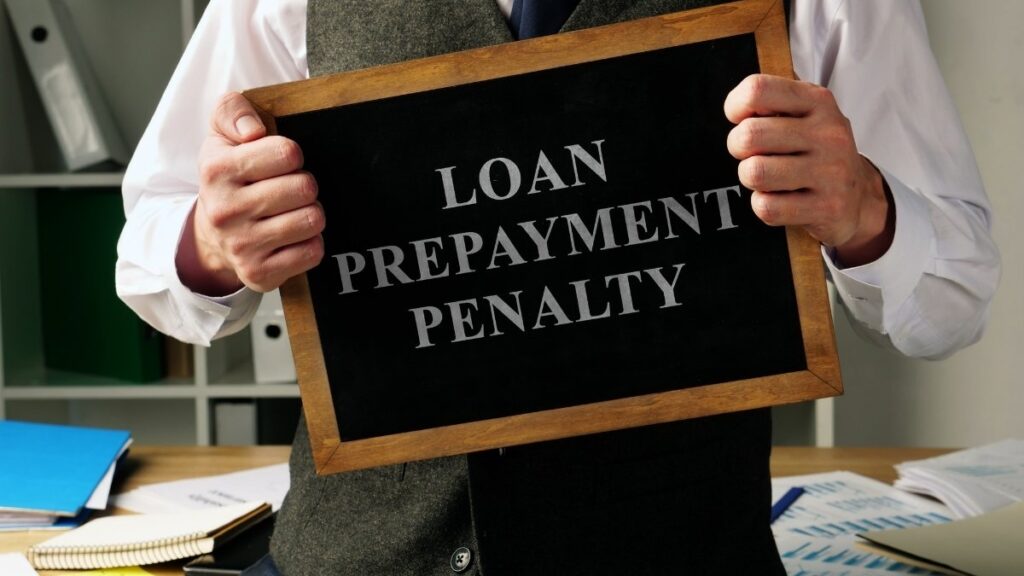
Your bank just told you that you need perfect credit and 20% down to buy a home—but here’s the truth they won’t share: you don’t. Banks and lenders profit from borrowers who don’t understand the mortgage process.
In 2025, with average 30-year mortgage rates hovering around 6.3%, even small misconceptions can cost you tens of thousands of dollars over the life of your loan.
This guide reveals which “requirements” are actually flexible, hidden fees you can negotiate or eliminate, and money-saving strategies banks rarely mention. You’ll get current 2025 data to make informed decisions and stop these common mortgage lies from draining your wallet.
Lie #1: You Need a 20% Down Payment to Buy a Home
Someone probably told you this. Maybe a parent, a friend, or even a real estate agent. They said you need 20% down or you’re not ready. That’s wrong.

The 20% myth started because that’s when you avoid Private Mortgage Insurance (PMI). But here’s what they didn’t tell you: waiting years to save 20% might cost you more than just paying PMI.
Here’s what you can actually do in 2025:
Conventional loans let you put down just 3%. FHA loans only need 3.5% if your credit score is 580 or higher. Veterans? VA loans require 0% down. Looking at rural properties? USDA loans also offer 0% down.
Some programs like ONE+ by Rocket Mortgage let buyers start with just 1% down.
Let’s do the math. You want to buy a $340,000 home. With 3% down, you need $10,200. That’s way different than $68,000 (which is 20%).
“But what about PMI?” you ask. Yes, you’ll pay it. But PMI typically costs $30-$70 per $100,000 borrowed each month. On a $330,000 loan, that’s roughly $100-$230 monthly.
Now consider this: if home prices go up 4% annually while you save for two more years, that $340,000 home now costs $367,000. You just lost $27,000 in buying power. Plus you paid rent for two more years instead of building equity.
Real numbers: the median down payment is 14%. First-time buyers average just 8%.
You don’t need 20%. You need to know your options.
Lie #2: You Need Perfect Credit to Qualify
Your credit score is 620. Someone tells you not to bother applying. They say lenders only want borrowers with 750+ scores.

Not true.
Here are the real minimum credit scores for 2025:
FHA loans accept scores as low as 500. Really. If you have a 580 or higher, you can put down 3.5%. Between 500-579? You’ll need 10% down, but you can still get approved.
Conventional loans typically want 620 or higher. VA loans are more flexible with credit history. USDA loans usually look for 640+.
Yes, a lower score means you’ll pay a higher interest rate. That’s the trade-off. But it doesn’t disqualify you.
Lenders look at more than just your credit score. They check your income, your debt-to-income ratio, your work history, and how much you have saved. A 650 score with steady income and low debt can beat a 720 score with high credit card balances.
Want better approval odds? Pay down existing debt. Keep credit card balances under 30% of your limits. Don’t close old accounts. Don’t apply for new credit cards right before applying for a mortgage.
Bad credit doesn’t lock you out. It just changes your terms.
Lie #3: The Interest Rate Is Your Actual Cost
A lender advertises 6.5%. You think that’s what you’ll pay. Then you look closer and see something called APR at 6.8%.

Which one is real?
Both. But APR tells you what you actually need to know.
The interest rate is just the cost to borrow money. APR (Annual Percentage Rate) includes everything: the interest rate plus origination fees, discount points, mortgage insurance premiums, and other lender charges.
The Truth in Lending Act requires lenders to show you APR. There’s a reason for that. Without it, lenders could advertise low rates while burying costs in fees.
Here’s a real example:
Lender A offers $300,000 at 7% with zero fees. The APR? Also 7%.
Lender B offers $300,000 at 7% with $6,000 in fees. The APR? 7.2%.
Same rate. Different cost.
APR is always higher than the interest rate (unless there are literally no fees, which is rare). The bigger the gap between rate and APR, the more fees you’re paying upfront.
When you compare offers, ignore the interest rate. Compare APRs. That’s your true cost.
A loan with a 6.7% interest rate but a 7.1% APR can cost more than a loan with a 6.8% rate and a 6.9% APR. The second loan has fewer junk fees.
Don’t let the advertised rate fool you. Always ask: “What’s the APR?”
Lie #4: All Closing Costs Are Non-Negotiable
You get your closing statement. The costs total $8,500. You figure that’s just how it is. You have to pay what they charge.

Wrong.
Average closing costs hit $5,749 according to recent data. But here’s what they don’t advertise: many of those fees are negotiable.
Here’s what you can challenge:
Application fees ($200-$500) – Some lenders don’t charge these at all.
Origination fees (0.5-1% of your loan) – This is profit for the lender. You can negotiate it down or find lenders who don’t charge it.
Processing fees and underwriting fees ($400-$600 each) – Sometimes these are the same service with two names. Point that out.
Rate lock fees – You shouldn’t pay extra to lock your rate. That should be standard.
What you can’t negotiate:
Appraisal fees (paid to third party). Title insurance and searches (required by law). Government recording fees. Escrow deposits.
But even required services have price ranges. You can shop around for title insurance and sometimes save hundreds.
Some lenders advertise “zero closing cost” mortgages. What they really mean is they roll the costs into a higher interest rate. That might work if you don’t plan to stay in the home long. But over 30 years, you’ll pay more.
Get your Loan Estimate (you’ll receive it within three days of applying). Review every line. Circle anything that seems high or duplicated. Call and ask about it.
“Can you reduce the origination fee?”
“Why are there both processing and underwriting fees?”
“Will you match this competitor’s closing costs?”
You’d be surprised how often the answer is yes. Lenders want your business. They’d rather reduce a fee than lose you to a competitor.
Closing costs aren’t written in stone. Treat them like any other negotiation.
Lie #5: Shopping Around Will Hurt Your Credit Score
You want to compare offers. But someone warns you: “Each application will tank your credit score. Only apply to one lender.”

That’s not how it works.
Credit scoring models know people shop for mortgages. When you have multiple mortgage inquiries within a 14-day window, they count as a single inquiry.
You could apply to five lenders in two weeks, and your credit report treats it like one inquiry. FICO gives you this shopping window specifically so you can find the best deal.
About 10% of your FICO score comes from recent credit inquiries. One mortgage shopping period has minimal impact. We’re talking maybe 5-10 points, and those points come back quickly.
Here’s how to do it right:
Get prequalified first (this is a soft pull – no credit impact). When you’re ready to make offers, apply to 3-5 lenders within 14 days. Complete all applications in that window. Don’t apply for credit cards or car loans during this time.
The difference between lenders can be huge. A 0.25% rate difference on a $350,000 loan costs you $18,000 over 30 years. Worth a small, temporary credit score dip? Absolutely.
People who don’t shop around leave thousands on the table because they believed this myth.
Apply to multiple lenders. Do it in a short window. Save money.
Lie #6: Biweekly Payment Programs Save You Massive Money
A lender offers you a biweekly payment program. They say you’ll pay off your mortgage years earlier and save tens of thousands in interest. It sounds amazing.

Then they mention a $395 setup fee.
Hold on.
Here’s what’s actually happening:
Biweekly means you pay half your mortgage every two weeks instead of once monthly. Since there are 52 weeks in a year, you make 26 half-payments. That equals 13 full payments instead of 12.
That extra payment each year does reduce your principal faster. On a $410,000 mortgage, you could save $33,000+ in interest over 10 years by making that extra annual payment.
But here’s the catch: many lenders charge $200-$400 to set this up. Some hold your biweekly payments and only apply them monthly anyway (which defeats the purpose). You’re paying for something you can do yourself for free.
The free alternative:
Take your monthly payment and divide by 12. Add that amount to each monthly payment.
Example: Your payment is $2,400. Divide by 12 = $200. Pay $2,600 monthly instead. You just made the equivalent of an extra payment each year without any setup fees.
Or just make one extra payment annually when you get a bonus or tax refund.
Before signing up for any biweekly program, ask: “Will you apply each payment immediately, or hold them until the full monthly amount is reached?” If they hold payments, you’re not actually getting the benefit you’re paying for.
The math works. The concept is solid. But you don’t need to pay someone to do basic arithmetic for you.
Lie #7: You Should Always Choose the Lowest Rate

Two offers sit in front of you:
Lender A: 6.5% rate, no points, no extra fees.
Lender B: 6.25% rate, 2 discount points ($6,000 upfront).
Lender B is better, right? Lower rate wins?
Not necessarily.
Discount points are prepaid interest. You pay money upfront to “buy down” your rate. Each point typically costs 1% of your loan amount and lowers your rate by about 0.25%.
But those points only pay off if you keep the loan long enough.
Let’s do the math on a $300,000 loan:
At 6.5% with no points, you pay roughly $1,896 monthly.
At 6.25% with $6,000 in points, you pay roughly $1,847 monthly.
You save $49 monthly. To recover that $6,000, you need 122 months – that’s over 10 years.
If you sell or refinance in five years, you paid $6,000 to save $2,940. You lost $3,060.
How long do you plan to stay in the home? If it’s less than the break-even period, the higher rate with no points is actually cheaper.
Also consider: that $6,000 could go toward a bigger down payment, reducing your PMI. Or stay in your emergency fund.
The “best” rate depends on your situation. If you’re buying your forever home, points might make sense. If you might move in a few years, skip them.
Don’t just chase the lowest number. Ask: “What’s this rate actually going to cost me over the time I’ll have this loan?”
Lie #8: Prepayment Penalties Are Rare (So Don’t Worry)
Your friend tells you prepayment penalties are basically extinct. No modern lender charges them anymore. So you don’t even check.

That’s risky.
While less common than a decade ago, prepayment penalties still exist on some conventional loans. If you try to pay off your mortgage early – either by refinancing or selling – you could owe 1-2% of your remaining balance.
On a $400,000 loan balance, that’s $4,000-$8,000.
There are two types:
Hard penalties apply whether you refinance or sell. Soft penalties only apply if you refinance.
Federal law limits these penalties. They’re only allowed in the first three years of qualified mortgages. And government-backed loans (FHA, VA, USDA) can’t charge them at all.
But “only in the first three years” can still hurt. Lots of people refinance within three years if rates drop. Lots of people sell if their job changes or they have a baby.
Where to check:
Look at page 1 of your Loan Estimate. There’s a line that says “Prepayment penalty.” Look at your Closing Disclosure before you sign.
If there’s a penalty, ask the lender to remove it. If they won’t, ask yourself if this loan is worth it. Sometimes other terms make up for it. Sometimes they don’t.
Don’t assume it’s not there. Check. It takes 30 seconds and could save you thousands.
Lie #9: You Can’t Remove PMI Until You Hit 20% Equity
You’re paying PMI. Someone tells you you’re stuck with it until you’ve paid down exactly 20% of your original loan amount. Could take years.

Actually, there are multiple ways out sooner.
For conventional loans:
You can request PMI removal when you reach 20% equity. It automatically cancels at 22% equity. That’s federal law.
But here’s what most people miss: equity comes from two sources. You paying down the loan AND your home value going up.
Let’s say you bought at $300,000 with 5% down. Two years later, your neighborhood has improved and your home is now worth $340,000. You’ve also paid down some principal.
Original loan: $285,000
Owed now: $275,000
Current value: $340,000
Your equity is $65,000 ($340,000 – $275,000). That’s 19% of current value. Pay down another $5,000 or wait a bit more, then request a new appraisal. If it shows 20% equity, you can drop PMI.
One warning about FHA loans:
These have MIP (Mortgage Insurance Premium), not PMI. If you put down less than 10%, MIP stays for the life of the loan. Your only escape is refinancing to a conventional loan.
So if your FHA loan is dragging, and you now have 20% equity plus better credit, run the numbers on a conventional refinance. Might be worth it to ditch that monthly insurance payment.
Don’t just passively pay PMI for years. Check your home’s value. Request removal when you qualify. Free up that money.
Lie #10: Your First Lender Offer Is As Good As It Gets
You apply to your bank. They offer you 6.8% with $7,500 in fees. You figure all lenders are basically the same, so you might as well go with someone you know.

You just left money on the table.
Different lenders can vary by 0.25-0.5% on rates. On a $350,000 loan, that’s a $60-$120 monthly difference. Over 30 years? $21,600-$43,200.
Fees vary even more. Some lenders charge 1% origination fees. Others charge zero. Some online lenders have lower overhead and pass savings to you.
2025 programs worth checking:
Bank of America offers up to $17,500 toward closing costs or down payment for eligible buyers. Alliant Credit Union often has low or no origination fees. Credit unions in general tend to charge fewer junk fees than big banks.
Your current lender might also want to keep you. When you’re refinancing, tell them you’re shopping around. Sometimes they’ll waive closing costs or offer a better rate to retain you.
Get at least three Loan Estimates. Put them side by side. Compare APRs (not just rates). Look at origination fees. Add up total closing costs.
Then do something many people skip: call back the lender with the best overall deal and see if they’ll match a competitor’s rate or reduce fees further. Sometimes they will.
One phone call could save you $5,000. Three applications could save you $30,000 over the life of your loan.
Treat this like buying a car. You wouldn’t accept the first price offered. Why do it with something 10 times more expensive?
Lie #11: Paying Extra Toward Principal Always Makes Sense
Dave from work pays an extra $500 toward his mortgage every month. He tells you that’s the smartest financial move anyone can make. Pay off your mortgage early and you’ll save so much in interest.

Sometimes Dave is right. Sometimes Dave is wrong.
It depends on your full financial picture.
When paying extra DOESN’T make sense:
You have credit card debt at 18-24% interest. You only have one month of savings for emergencies. You’re not getting your full employer 401k match. You have other debts over 6% interest.
Let’s say your mortgage rate is 6.5%, but you have $8,000 in credit card debt at 22% APR. Every dollar that goes to your mortgage could pay down debt that’s costing you more than three times as much.
Or say you lose your job. Having $10,000 in the bank is way more useful than having made $10,000 in extra mortgage payments. You can’t easily get that money back out.
When paying extra DOES make sense:
You have 6 months of expenses saved. All high-interest debt is gone. You’re maxing out retirement account matches. You’re not comfortable with investment risk.
Even then, consider this: if you have a 6.5% mortgage and you can earn 8% in a diversified stock portfolio, you mathematically come out ahead by investing instead of prepaying.
Plus, mortgage interest is tax-deductible if you itemize. That 6.5% rate might really cost you 5% after taxes.
There’s no universal right answer. It’s about your situation, your other debts, your savings, your risk tolerance, and your timeline.
Pay off high-interest debt first. Build your emergency fund. Then think about extra mortgage payments.
The Bottom Line
The mortgage industry makes more money when you don’t understand how things work. These 11 lies keep borrowers overpaying by thousands – sometimes tens of thousands – of dollars.
You don’t need perfect credit or 20% down. You can shop around without killing your credit score. You can negotiate fees, remove PMI early, and choose the right rate for YOUR situation (not just the lowest number).
Your action plan:
- Apply to at least three lenders within a 14-day window
- Compare APRs, not just interest rates
- Challenge fees that seem high or duplicated
- Read every line of your Loan Estimate and Closing Disclosure
- Ask questions. If something doesn’t make sense, speak up
Before you sign anything, remember: this is likely the biggest financial decision of your life. Lenders work with hundreds of borrowers. You’re making this choice once. That means you need to be more careful than they do.
Armed with the truth about these mortgage lies, you can save $20,000 to $50,000 over your loan’s lifetime. That’s real money – money that could fund your kid’s college, grow your retirement, or buy that lake house you’ve been dreaming about.
Don’t let myths cost you. Now you know better.






